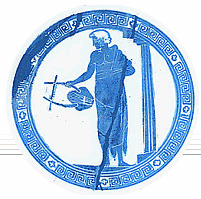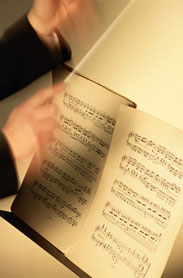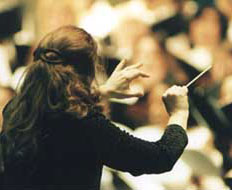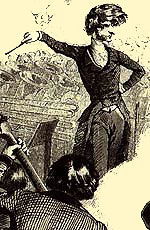| |

|
|
|
|
|
|
|
|||
 |
 |
|
||
| |
|

|
THE CONDUCTOR
A conductor must stand in front of an orchestra or other large body of musicians to coordinate and direct a musical performance. He or she must provide a steady and musical pulse (with the right hand) as well as choose and hold an appropriate tempo.. Also they must visually illustrate dynamics, expression markings and cue musicians when their entrance is required (with the left hand), provide the imagination and inspiration for the players, secure an artistic interpretation, one that attempts to re-create the music as it existed in the composer’s mind and at the same time in the mind of the conductor. Finally they must balance the parts and be responsible for each instruments accurate delivery, intonation., articulation, clarity and in the end lead an organization of musicians to a unified execution of music. The leading of an orchestra or other large body of musician is done by using visible gestures which include the use and maintenance of certain beat patterns, employing body motion and physical signals that tell the musicians what to do. They usually have a thin tapered stick or baton, they see and listen very carefully to all that is going around them and then visibly react to it. The
conductor must prepare the orchestra or other large body of
musicians during rehearsals. They must read all the parts
of the musical score simultaneously and have a knowledge of
harmony, counterpoint, orchestration and a familiarity with
all styles and practices from the past. The conductor must
have some acquaintance with the playing techniques of all
the instruments of the orchestra. Conducting is one of the
most difficult and most rewarding of all musical activities.
|
| WELCOME : SYLLABUS : ASSIGNMENTS : GLOSSARY : QUIZZES : BULLETIN BOARD : LINKS : REVIEW : MEDIA |


